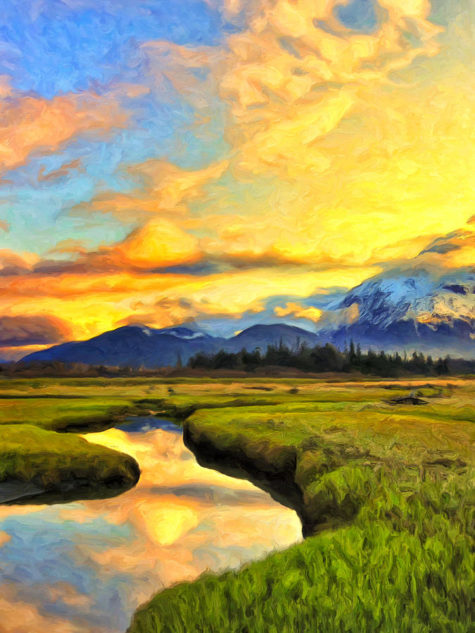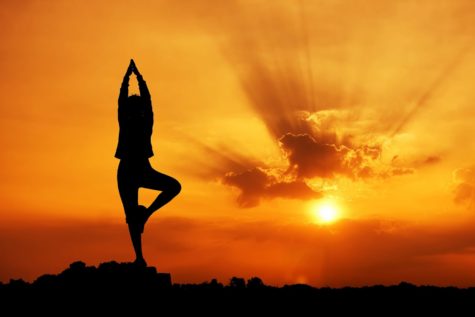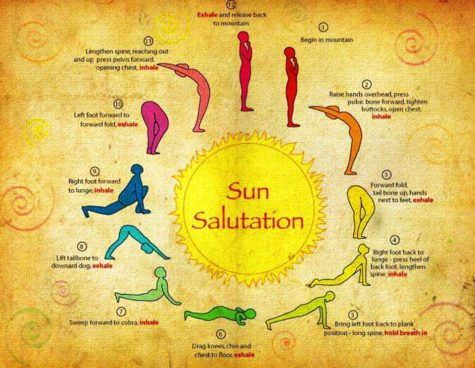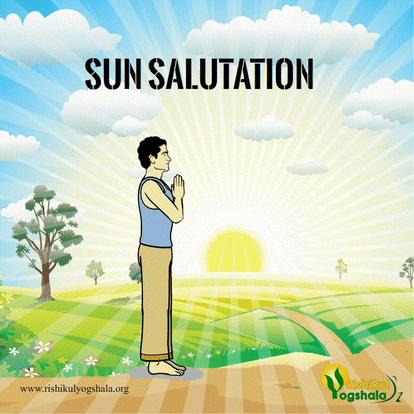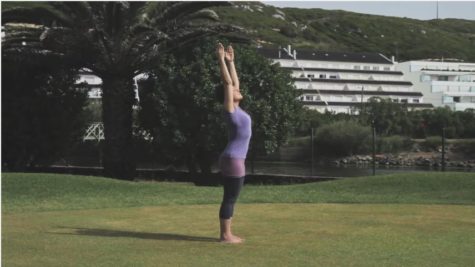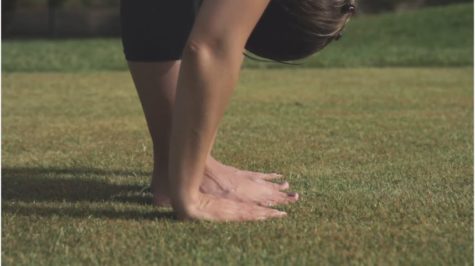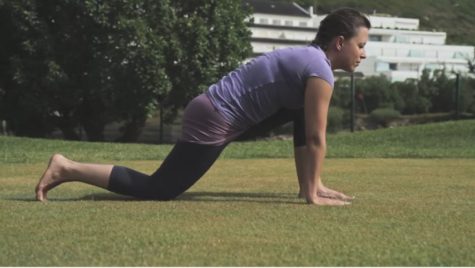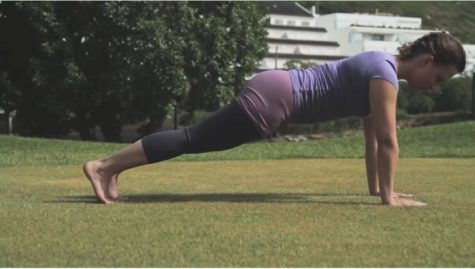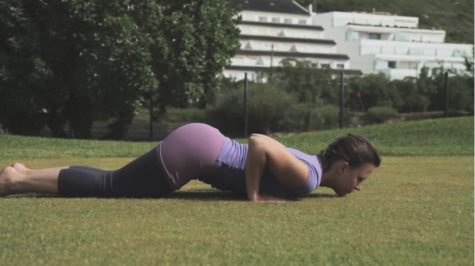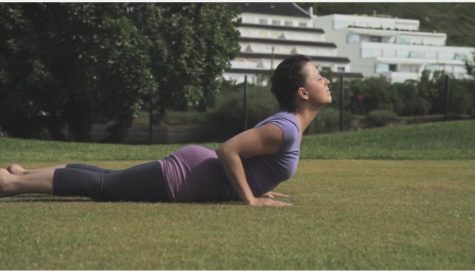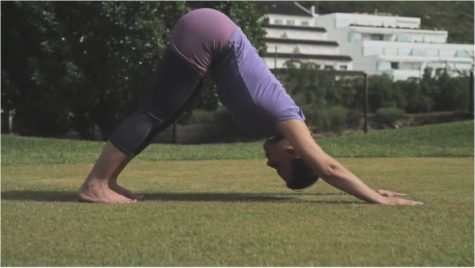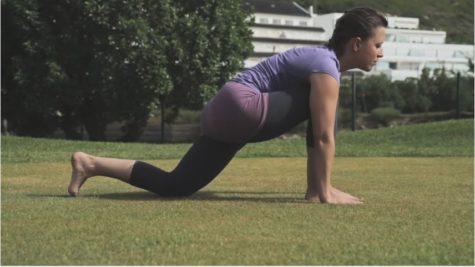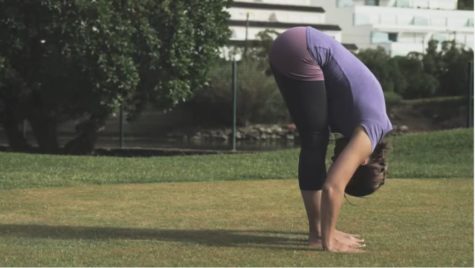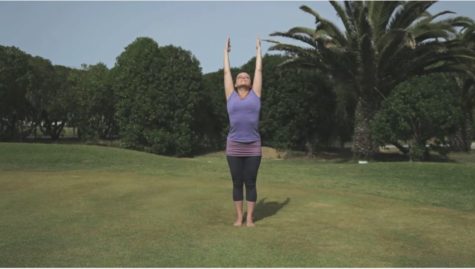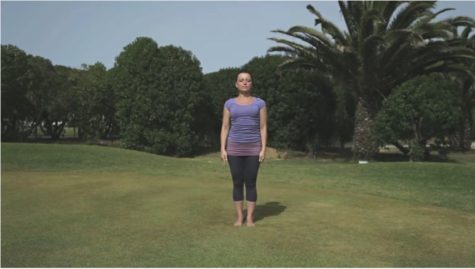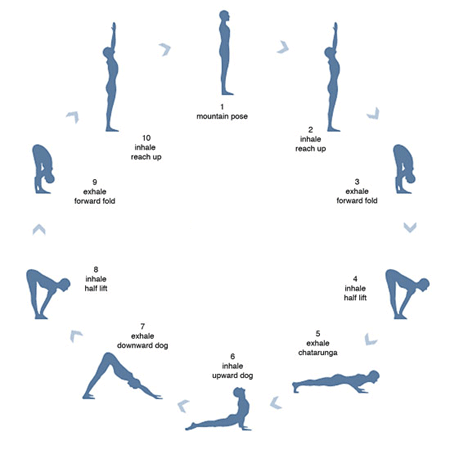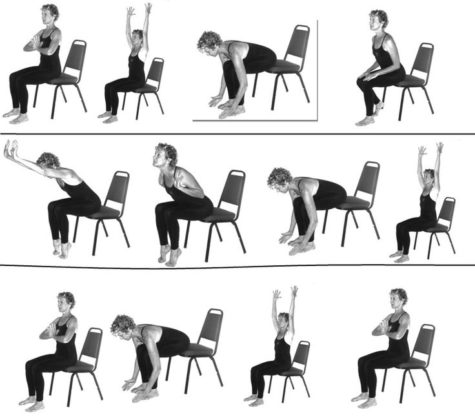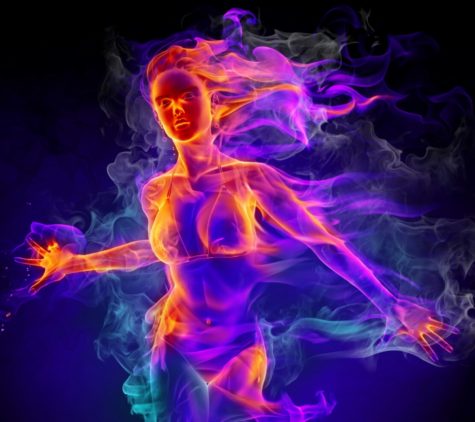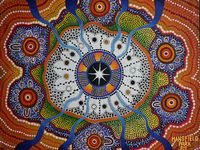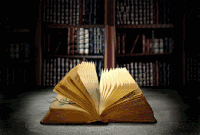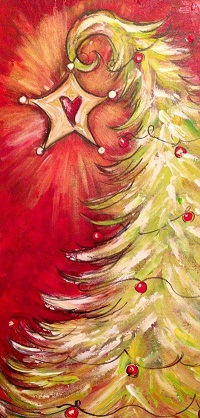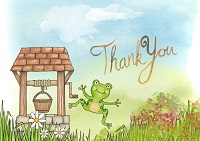Sun
Prosperity Sunrise
In the olden days, the sun and gold and god and prosperity were all tied up together.
The sun is a powerful prosperity and wealth symbol, perhaps the most powerful of them all.
So in a moment, close your eyes and find yourself on a wide, sweeping plane, cool and dark it is still but there is a banding on the far horizon that tells you the sun is about to rise.
This is your prosperity sunrise.
Feel the power and radiance of the sun increasing as the sky fills with living light, as it gets brighter and brighter, and then the sun rises majestically over the horizon and floods the plane with light, bathes you in light, powerful energy, powerful charge and powerful wealth.
Accept this blessing with open arms.
Turn around on the spot and bathe in this blessing of wealth and power.
When you are filled to overflowing and beyond, return and continue your day …
From:
- Dr Silvia Hartmann
- The 60 Second Wealth Creators
- Provided by www.DragonRising.com
Good Morning To The Sun
This 5 Minute Morning Exercise Will Revitalize Your Life.
Making exercise a priority in the morning can be challenging. I think most people would agree that exercising in the morning is a good thing, but the reality is time always seems to get in the way. There are many benefits that come from a morning exercise routine such as; increased blood flow, more energy and fewer aches and pains.
So what’s the solution to realize these benefits and many more? It’s a yoga sequence call Sun Salutation (Surya Namaskara). The Sun Salutation is a 5-minute morning exercise that will revitalize your life and send you off to tackle your day with a sense of calm and purpose.
The Sun Salutation is a sequence of postures, each with its meaning and function. It is a daily practice intended for dawn and/or sunset and done in the direction of the sun. Ideally, you would practice Sun Salutation outside to be in nature when honoring the sun and sharing your gratitude for its energy, but it isn’t a requirement.
The Benefits:
A regular and faithful practice of the Sun Salutation in the mornings can benefit you in the following ways:
- Strengthens the entire digestive system.
- Invigorates and restores the nervous system.
- Energizes the heart and regulates blood pressure and heart palpitations.
- Promotes healthy lungs and breath.
- Stimulates glandular activity.
- Strengthens the muscles in your upper and lower body including your abdomen and back.
- Reduces excess fat on the body.
- Improves kidney function.
- Encourages proper posture.
- Brings clarity to your mind.
Basically, a morning ritual that includes the Sun Salutation will benefit all your vital organs, muscles, your mind and it will provide shape and muscle to your body in a healthy, natural way.
Doing The Sun Salutation
The good thing about the Sun Salutation is it is perfect for all levels. The series is made up of eight beginning yoga poses that take you through twelve stations. It can take you anywhere from 5 minutes to longer, depending on how many sequences you choose to do.
The Sun Salutation can be performed at various speeds. A slow rhythmic practice is recommended as it has greater effect on the mind. The Sun Salutation helps to attain a meditative mood when performed slowly, with attention on the breath and chanting the specific mantra. When performed with speed, it has more effect on the body, energizing it and burning extra calories.
No matter what the speed is, it is important to pay attention to the breathing.
- Contraindications and Cautions
The Sun Salutation should not be practiced by those suffering from high blood pressure, coronary diseases and strokes. Also those with hernia should avoid this. Women should generally not practice it during pregnancy. People with spondylitis and sciatica should consult a doctor before practicing the Sun Salutation.
Depending on your preferred style of yoga, you may be familiar with one of the many versions of sun salutes. The Vinyasa-style salutations, for example, incorporate chaturangas (low plank), and focus more on upper-body strength. The below postures are the most traditional version of the Sun Salute and actively engage all parts of the body.
Each Sun Salutation round consists of two sets, and the 12 yoga poses complete one set of Sun Salutations (Surya Namaskar). In order to complete the second half of one round, repeat the same sequence of postures, only moving the left leg instead of the right (steps 4 and 9). Sun Salutations, as the name suggests, are best done early morning on an empty stomach.
Let’s Get Started
Make sure you are in comfortable clothing and barefoot is best.
- Prayer pose – Pranamasana
Stand at the edge of your mat, keep your feet together and balance your weight equally on both the feet. Expand your chest and relax your shoulders.
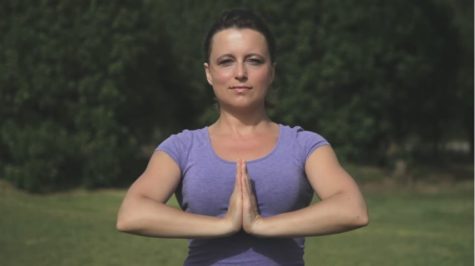
As you breathe in, lift both arms up from the sides and as you exhale, bring your palms together in front of the chest in prayer position.
Relax and breathe normally.
- Raised Arms Pose – Hastauttanasana
Breathing in, lift the arms up and back, keeping the biceps close to the ears. In this pose, the effort is to stretch the whole body up from the heels to the tips of the fingers
To deepen the stretch, push the pelvis forward a little bit. Ensure that you are reaching up with the fingers rather than trying to bend backwards.
Also called the Upward Salute, Urdhva Hastasana,Talasana, or the Palm Tree Pose.
- Hand to Foot Pose – Hasta Padasana
Breathing out, bend forward from the waist, keeping the spine erect. As you exhale completely, bring the hands down to the floor beside the feet.
You may bend the knees, if necessary, to bring the palms down to the floor. If it doesn’t touch, go as far as possible without straining. Try to touch the knees with the forehead. To deepen the stretch, straighten the knees.
This position is also called the Standing Forward Bend or Uttanasana.
- Equestrian Pose – Ashwa Sanchalanasana
Breathing in, push your right leg back as far as possible. Bring the right knee to the floor and look up.
The left foot is in between the palms. Be extra careful to avoid pressure on the back knee, especially if it is on the floor. If the neck is feeling sensitive then look down at the floor in front of you instead of lifting the head up.
- Stick Pose – Dandasana
As you breathe in, take the left leg back and bring the whole body in a straight line.
Keep your arms perpendicular to the floor.
This is similar to the Four-Limbed Staff Pose or Chaturanga Dandasana.
- Eight Points Salute – Ashtanga Namaskara
Gently bring your knees down to the floor and exhale. Take the hips back slightly, slide forward, and rest your chest and chin on the floor. Raise your posterior slightly.
Lower the body to the ground in such a way that it touches the floor in eight locations. The two hands, two feet, two knees, and chest and chin should touch the floor.
- Cobra Pose – Bhujangasana
Slide forward and raise the chest up into the Cobra Pose. You may keep your elbows bent in this pose with the shoulders away from the ears. Look up.
As you inhale, make a gentle effort to push the chest forward. As you exhale, make a gentle effort to push the navel down. Tuck the toes under.
This position looks like the cobra which has raised its hood.
- Mountain Pose – Parvatasana
While exhaling, take the right leg backward and place it along the left leg. Raise the buttocks. Let the hands be straight supporting the weight of the body. The head should be placed between the hands.
The pose looks like a mountain from the side. If possible, try and keep the heels on the ground and make a gentle effort to lift the tailbone up, going deeper into the stretch.
The Tadasana Pose is also called the Mountain Pose. The one described here is probably the exact same pose as the Downward Facing Dog or Adho Mukha Svanasana.
- Equestrian pose – Ashwa Sanchalanasana
Breathing in, bring the right foot forward in between the two hands, left knee down to the floor, press the hips down and look up. (This is the same position as before but with the right foot forward instead of the left foot forward.)
To deepen this yoga stretch, place the right foot exactly between the two hands and the right calf perpendicular to the floor. In this position, make a gentle effort to push the hips down towards the floor.
- Hand to Foot Pose – Hasta Padasana
Breathing out, bring the left foot forward. Keep the palms on the floor. You may bend the knees, if necessary. This is a repetition of the same pose earlier in the sequence.
To deepen this yoga stretch, gently straighten the knees and if you can, try and touch your nose to the knees. Keep breathing.
- Raised Arms Pose – Hastauttanasana
Breathing in, roll the spine up, hands go up and bend backwards a little bit, pushing the hips slightly outward.
To deepen this yoga stretch, ensure that your biceps are beside your ears. The idea is to stretch up more rather than stretching backwards.
- Standing Pose – Tadasana
As you exhale, first straighten the body, then bring the arms down. Relax in this position, observe the sensations in your body. You can also end your session with the Prayer Pose.
Confusingly, in some yoga traditions, Tadasana is also referred to as the Mountain Pose. It should not be confused with the Parvatasana (Mountain Pose) described above.
This completes one round of Sun Salutations. Start with one round when you are learning the practice and then increase it up to 10 rounds if you have the time and the desire.
An Important Point
I did the Sun Salutations for years, and really enjoyed them. I did not try very hard to do them exactly right, nor did I get caught up in proper form. I just did the best I could, and I didn’t care if it was sloppy or lazy or not very well done. And yet, it felt really good, and I got a lot of benefit from it.
If you enjoy yoga, and want to learn the correct techniques and get the most from the exercises, you can check out the information on each of the individual poses explained below. If you just want to get your body stretching and moving, watch the animation a few times and give it a go.
The Vinyasa-style Sun Salutations
The below detailed instructions come courtesy of The Yoga Journal.
- To begin, stand in Mountain Pose. Distribute your weight evenly over both feet. Establish a slow, steady rhythm for your breath. Find your center.
- Next, inhale and stretch your arms out to the side and overhead into Upward Salute.
- Reach your heart and arms to the heavens, sending your greeting to the sun.
- As you exhale, hollow out your belly and fold into Standing Forward Bend, connecting down into the earth. Keep your legs firmly engaged.
- Inhale and lengthen your spine forward into Standing Half Forward Bend. In this pose, the gaze is lifted, the spine is extended, and the fingertips can stay on the floor or rise to the shins.
- Exhale and step or lightly hop your feet back behind you into Plank Pose. Your wrists should be flat on the floor, shoulder-distance apart, and your feet should be at hip distance. Take a full breath in as you lengthen through your spine.
- Exhale and lower into Four-Limbed Staff Pose, keeping your legs straight and pushing back into your heels or bringing your knees to the floor. Build heat in the center of your body as you hold this challenging posture.
- Inhale and carve your chest forward into Upward-Facing Dog, directing that energy out from your heart. Pull your shoulders back and open your collarbones. Engage your legs but relax your gluteal muscles.
- Exhale and roll over the toes, coming into Downward-Facing Dog Pose. Ground down through your hands and feet as you lengthen your spine. Remain here for five breaths.
- On your fifth exhale, bend your knees and look between your hands. Then inhale and step or lightly hop your feet between your hands, returning to Standing Half Forward Bend.
- Exhale back to Standing Forward Bend, surrendering into the fold.
- Inhale, reaching your arms out wide to your sides and coming to stand through a flat back. Feel a renewed sense of energy as you draw your arms overhead into Upward Salute.
- Exhale and return to Mountain Pose, your home base. Remain here for a few breaths, feeling the movement of energy through your body, or continue on to your next salute.
The Individual Poses:
Prayer Pose – Pranamasana
The Prayer Pose is a common gesture used in India and many eastern countries to show respect and a popular way to greet others especially elders, seniors, gurus and guests.
In India, the word for greeting is “Namaste” which means that – I bow down to the Self in you. The Self or the Jiva is said to be located at the heart center.
Hence the palms are brought together touching one’s own heart when bowing down and greeting others. This gesture with the hands is called Pranamasana.
- Step 1
Stand erect with the feet held together.
- Step 2
Bring the two hands together and the palms touching each other at the chest level. Look straight ahead. Breathe in normally. This will give a sense of relaxation.
This pose is done in the beginning and end of the Sun Salutation. Pranamasana gives a sense of relaxation and inner peace when done with feeling.
Mountain Pose – Tadasana
The foundation of all standing poses, Mountain Pose makes a great a starting position, resting pose, or tool to improve posture.
- Note
The Mountain Pose – Tadasana shares its common name with Mountain Pose – Parvatasana which appears to be the same as Downward Facing Dog, descriptions of both can be found below.
- Step 1
Stand with the bases of your big toes touching, heels slightly apart (so that your second toes are parallel). Lift and spread your toes and the balls of your feet, then lay them softly down on the floor. Rock back and forth and side to side. Gradually reduce this swaying to a standstill, with your weight balanced evenly on the feet.
- Step 2
Firm your thigh muscles and lift the knee caps, without hardening your lower belly. Lift the inner ankles to strengthen the inner arches, then imagine a line of energy all the way up along your inner thighs to your groins, and from there through the core of your torso, neck, and head, and out through the crown of your head. Turn the upper thighs slightly inward. Lengthen your tailbone toward the floor and lift the pubis toward the navel.
- Step 3
Press your shoulder blades into your back, then widen them across and release them down your back. Without pushing your lower front ribs forward, lift the top of your sternum straight toward the ceiling. Widen your collarbones. Hang your arms beside the torso.
- Step 4
Balance the crown of your head directly over the center of your pelvis, with the underside of your chin parallel to the floor, throat soft, and the tongue wide and flat on the floor of your mouth. Soften your eyes.
Mountain Pose is usually the starting position for all the standing poses. But it’s useful to practice Mountain Pose as a pose in itself. Stay in the pose for 30 seconds to 1 minute, breathing easily.
Upward Salute – Urdhva Hastasana
Urdhva Hastasana literally translates to “Raised Hands Pose,” but it is also sometimes called Talasana, the Palm Tree Pose.
- Step 1
Stand in Mountain Pose. Turn your arms outward (or laterally) so your palms face away from your torso and thumbs point backward. With an inhale, sweep your arms out to the sides and up toward the ceiling.
- Step 2
If you’re tighter in the shoulders, stop when your arms are approximately parallel to each other. But if possible without hunching your shoulders forward, press your palms firmly together by, touching the bases of your palms first, then the palms themselves, and finally the fingers.
- Step 3
Extend your elbows fully and reach up through your pinkies so your thumbs turn slightly down toward the crown of your head. Making sure not to compress the back of your neck, tip your head back slightly and gaze at your thumbs.
- Step 4
Don’t let your lower front ribs protrude forward. Bring your front ribs down (toward your pelvis) and in (toward your spine), and lengthen your tail bone toward the floor. Then lift your rib cage evenly away from your pelvis to stretch the circumference of your belly. Hold for a few breaths.
- Step 5
Exhale and, as you sweep your arms out to the sides, tip your torso forward from the hip joints to fold into Standing Forward Bend.
This pose stretches the belly, improves digestion, stretches the shoulders and armpits, and helps relieve mild anxiety. It’s good for fatigue, asthma, indigestion and back ache.
Standing Forward Bend – Uttanasana
Standing Forward Bend will wake up your hamstrings and soothe your mind. If you have had a back injury, do this pose with bent knees.
- Step 1
Stand in Mountain Pose, hands on hips. Exhale and bend forward from the hip joints, not from the waist. As you descend draw the front torso out of the groins and open the space between the pubis and top sternum. As in all the forward bends, the emphasis is on lengthening the front torso as you move more fully into the position.
- Step 2
If possible, with your knees straight, bring your palms or finger tips to the floor slightly in front of or beside your feet, or bring your palms to the backs of your ankles. If this isn’t possible, cross your forearms and hold your elbows. Press the heels firmly into the floor and lift the sitting bones toward the ceiling. Turn the top thighs slightly inward.
- Step 3
With each inhalation in the pose, lift and lengthen the front torso just slightly; with each exhalation release a little more fully into the forward bend. In this way the torso oscillates almost imperceptibly with the breath. Let your head hang from the root of the neck, which is deep in the upper back, between the shoulder blades.
- Step 4
Standing Forward Bend can be used as a resting position between the standing poses. Stay in the pose for 30 seconds to 1 minute. It can also be practiced as a pose in itself.
- Step 5
Don’t roll the spine to come up. Instead bring your hands back onto your hips and reaffirm the length of the front torso. Then press your tailbone down and into the pelvis and come up on an inhalation with a long front torso.
- Beginner’s Tip
To increase the stretch in the backs of your legs, bend your knees slightly. Imagine that the sacrum is sinking deeper into the back of your pelvis and bring the tailbone closer to the pubis. Then against this resistance, push the top thighs back and the heels down and straighten the knees again. Be careful not to straighten the knees by locking them back (you can press your hands against the back of each knee to provide some resistance); instead let them straighten as the two ends of each leg move farther apart.
This pose calms the brain and helps relieve stress and mild depression. It also stimulates the liver and kidneys; stretches the hamstrings, calves, and hips; strengthens the thighs and knees; improves digestion; helps relieve the symptoms of menopause; and reduces fatigue and anxiety. It also relieves headache and insomnia. Standing Forward Bend is therapeutic for asthma, high blood pressure, infertility, osteoporosis, and sinusitis.
Standing Half Forward Bend – Ardha Uttanasana
With any neck injury, don’t lift the head to look forward.
- Step 1
From Standing Forward Bend, press your palms or fingertips into the floor (or blocks on the floor) beside your feet. With an inhale, straighten your elbows and arch your torso away from your thighs, finding as much length between your pubic bone and navel as possible.
- Step 2
With your palms (or fingertips) push down and back against the floor, and lift the top of your sternum up (away from the floor) and forward. You might bend your knees slightly to help get this movement, which will arch the back.
- Step 3
Look forward, but be careful not to compress the back of your neck. Hold the arched-back position for a few breaths. Then, with an exhale, release your torso into full Standing Forward Bend or, if you are doing the Sun Salutations, lower yourself into the plank position.
The Standing Half Forward Bend stretches the front torso, strengthens the back and improves posture. This position also stimulates the belly
Plank Pose
Plank Pose is one of the positions in the traditional Sun Salutation sequence. You can also perform this pose by itself and stay anywhere from 30 seconds to 1 minute. If you have carpal tunnel syndrome, it is not recommended that you hold this pose for any length of time.
- Step 1
If you are coming into this pose from the Standing Half Forward Bend, exhale and step or lightly hop your feet back behind you into Plank Pose.
When practicing this pose by itself, start in Downward Facing Dog. Then inhale and draw your torso forward until the arms are perpendicular to the floor and the shoulders directly over the wrists, torso parallel to the floor.
- Step 2
Press your outer arms inward and firm the bases of your index fingers into the floor. Firm your shoulder blades against your back, then spread them away from the spine. Also spread your collarbones away from the sternum.
- Step 3
Press your front thighs up toward the ceiling, but resist your tailbone toward the floor as you lengthen it toward the heels. Lift the base of the skull away from the back of the neck and look straight down at the floor, keeping the throat and eyes soft. Exhale and lower into Four-Limbed Staff Pose (if you are practicing the Sun Salutations).
A beginner’s best friend, this pose is the perfect precursor to more challenging arm balances. It strengthens the arms, wrists, and spine, and also tones the abdomen.
Four-Limbed Staff Pose – Chaturanga Dandasana
Four-Limbed Staff Pose is one of the positions in the Sun Salutation sequence. You can also practice this pose individually for anywhere from 10 to 30 seconds. Release with an exhalation. Either lay yourself lightly down onto the floor or push strongly back to Downward Facing Dog, lifting through the top thighs and the tailbone.
- Step 1
At this point, you are in the Plank Pose. Firm your shoulder blades against your back ribs and press your tailbone toward your pubis.
- Step 2
With an exhalation slowly lower your torso and legs to a few inches above and parallel to the floor. There’s a tendency in this pose for the lower back to sway toward the floor and the tailbone to poke up toward the ceiling. Throughout your stay in this position, keep the tailbone firmly in place and the legs very active and turned slightly inward. Draw the pubis toward the navel.
- Step 3
Keep the space between the shoulder blades broad. Don’t let the elbows splay out to the sides; hold them in by the sides of the torso and push them back toward the heels. Press the bases of the index fingers firmly to the floor. Lift the top of the sternum and your head to look forward.
- Contraindications and Cautions
It is not recommended that you hold this pose for any length of time if you are pregnant, or if you have carpal tunnel syndrome.
Even experienced students have difficulty with Four-Limbed Staff Pose. Lay a thickly rolled blanket on the floor below your Plank Pose, parallel to your spine. Lower yourself lightly onto this support. Use it minimally, just enough to keep yourself afloat.
You can get a feel for this challenging position by practicing it standing upright. Stand and face a wall, a few inches away from the wall. Press your hands against the wall, slightly lower than the level of your shoulders. Imagine that you are trying to push yourself away from the wall, but the firmness of your shoulder blades against the back prevents any movement. Lengthen your tailbone into your heels and lift the top of your sternum toward the ceiling.
The completed form of Four-Limbed Staff Pose is quite difficult to perform at first, until your arms, back, and legs are strong enough to support you. From Plank Pose, begin by lowering your knees to the floor and then, with an exhalation, lower your sternum to within an inch or two above the floor.
Upward Facing Dog – Urdhva Mukha Svanasana
Upward-Facing Dog will challenge you to lift and open your chest. Upward Facing Dog is one of the positions in the traditional Sun Salutation sequence. You can also practice this pose individually, holding it anywhere from 15 to 30 seconds, breathing easily. Release back to the floor or lift into Downward Facing Dog with an exhalation.
- Step 1
Lie prone on the floor. Stretch your legs back, with the tops of your feet on the floor. Bend your elbows and spread your palms on the floor beside your waist so that your forearms are relatively perpendicular to the floor.
- Step 2
Inhale and press your inner hands firmly into the floor and slightly back, as if you were trying to push yourself forward along the floor. Then straighten your arms and simultaneously lift your torso up and your legs a few inches off the floor on an inhalation. Keep the thighs firm and slightly turned inward, the arms firm and turned out so the elbow creases face forward.
- Step 3
Press the tailbone toward the pubis and lift the pubis toward the navel. Narrow the hip points. Firm but don’t harden the buttocks.
- Step 4
Firm the shoulder blades against the back and puff the side ribs forward. Lift through the top of the sternum but avoid pushing the front ribs forward, which only hardens the lower back. Look straight ahead or tip the head back slightly, but take care not to compress the back of the neck and harden the throat.
- Contraindications and Cautions
It is not recommended that you hold this position for any length of time if you have the following – back injury, Carpal tunnel syndrome, headache, or pregnancy.
Often it’s difficult to keep the legs strongly suspended above the floor. Before you move into the pose, position a thick blanket roll below your top thighs. When you are in the pose, lightly rest your thighs on this roll as you press the tailbone closer to the roll.
There’s a tendency in this pose to “hang” on the shoulders, which lifts them up toward the ears and “turtles” the neck. Actively draw the shoulders away from the ears by lengthening down along the back armpits, pulling the shoulder blades toward the tailbone, and puffing the side ribs forward. If you need help learning this, lift each hand on a block.
Upward Facing Dog improves posture; strengthens the spine, arms, wrists; stretches chest and lungs, shoulders, and abdomen; firms the buttocks; and stimulates abdominal organs. This position also helps relieve mild depression, fatigue, and sciatica, and is therapeutic for asthma.
Downward Facing Dog – Adho Mukha Svanasana
Deservedly one of yoga’s most widely recognized yoga poses, Downward Facing Dog, offers the ultimate all-over, rejuvenating stretch. Downward Facing Dog is one of the poses in the traditional Sun Salutation sequence. It’s also an excellent yoga asana all on its own. Stay in this pose anywhere from 1 to 3 minutes. Then bend your knees to the floor with an exhalation and rest in Child’s Pose.
- Step 1
Come onto the floor on your hands and knees. Set your knees directly below your hips and your hands slightly forward of your shoulders. Spread your palms, index fingers parallel or slightly turned out, and turn your toes under.
- Step 2
Exhale and lift your knees away from the floor. At first keep the knees slightly bent and the heels lifted away from the floor. Lengthen your tailbone away from the back of your pelvis and press it lightly toward the pubis. Against this resistance, lift the sitting bones toward the ceiling, and from your inner ankles draw the inner legs up into the groins.
- Step 3
Then with an exhalation, push your top thighs back and stretch your heels onto or down toward the floor. Straighten your knees but be sure not to lock them. Firm the outer thighs and roll the upper thighs inward slightly. Narrow the front of the pelvis.
- Step 4
Firm the outer arms and press the bases of the index fingers actively into the floor. From these two points lift along your inner arms from the wrists to the tops of the shoulders. Firm your shoulder blades against your back, then widen them and draw them toward the tailbone. Keep the head between the upper arms; don’t let it hang.
- Contraindications and Cautions
Pregnancy: Do not do this pose late-term. High blood pressure or headache: Support your head on a bolster or block, ears level between the arms. Do not hold this pose for any length of time if you have Carpal tunnel syndrome or Diarrhea.
If you have difficulty releasing and opening your shoulders in this pose, raise your hands off the floor on a pair of blocks or the seat of a metal folding chair.
Downward Facing Dog calms the brain and helps relieve stress and mild depression. This pose also energizes the body; stretches the shoulders, hamstrings, calves, arches, and hands; and strengthens the arms and legs. It helps relieve the symptoms of menopause; and relieves menstrual discomfort when done with head supported. Downward Facing Dog helps prevent osteoporosis; improves digestion; and relieves headache, insomnia, back pain, and fatigue. It is therapeutic for high blood pressure, asthma, flat feet, sciatica, and sinusitis.
Equestrian Pose – Ashwa Sanchalanasana
The Equestrian Pose is also called the Lunge Pose. Be extra careful to avoid pressure on the back knee, especially if it is on the floor. Consider placing a blanket underneath the knee to support it. This pose is fairly easy to do and gives flexibility to the legs. If the neck is feeling sensitive then look down at the floor in front of you instead of lifting the head up
- Step 1
The Equestrian Pose is done immediately after the Hand To Foot Pose (Standing Forward Bend) when doing the traditional version of the Sun Salutations. So this is the starting pose for the Equestrian Pose.
- Step 2
From this position, take the left leg as far back as possible. In the process, bend the right knee without changing its position. Inhale while stretching the left leg backwards.
- Step 3
Keep the hands straight with fingers touching the floor. Arch the back and tilt the head slightly backward. Look straight ahead.
When done as part of the Sun Salutation exercises a mantra can be chanted while performing this asana. Equestrian Pose is done as the 4th pose and the 9th pose. During 4th pose chant “Om Bhanave Namaha”. It means salutations to the one who shines. During 9th pose chant “Om Adityaya Namaha”. It means salutation to the son of Aditi.
The Equestrian Pose stretches the groin, quadriceps, leg and the hips; and also stretches the back muscles and opens the chest. It tones the abdominal organs and is good for indigestion, constipation and sciatica. It also gives a sense of nervous balance.
Mountain Pose – Parvatasana
In Sanskrit “Parvata’ means mountain. The pose looks like a mountain from the sides and hence the name Parvatasana. Confusingly, in some yoga traditions, Mountain Pose is also a name given to the Tadasana pose and this pose is probably the exact same pose as the Downward Facing Dog or Adho Mukha Svanasana.
As part of the Sun Salutation exercises, Parvatasana Mountain Pose is performed after the Equestrian Pose. Hence the Equestrian Pose becomes the starting pose for Parvatasana Mountain Pose.
- Step 1
From the Equestian Pose, straighten the bent leg and take it backwards. Exhale during this process. Let the right and left foot be together.
- Step 2
Raise the buttocks up. Let the two arms be on the floor and support the body weight.
- Step 3
Lower the head to be between the two arms. The body makes the shape of a triangle when observed from the sides. It looks like a mountain and hence the name.
When done as part of one of the traditional versions of the Sun Salutation exercises, Parvatasana Mountain Pose is done as the fourth pose and the ninth pose.
Parvatasana Mountain Pose can strengthen the wrists and legs. It also increases the flow of blood to the head. It tones the spinal nerves and sends good flow of blood to the spinal region. This pose also increases blood flow to the brains.
Eight Limbed Salutation – Ashtanga Namaskara
The Eight Limbed Salutation is part of the Sun Salutation series of asanas. It appears as the 6th pose in the Sun Salutation or Surya Namaskara. In this pose, the body touches the ground in eight locations – the two feet (toes), the two knees, the two palms, the chest and the head.
In Sanskrit, “ashta” means eight and “anga” means part. Hence the name Ashtanga Namaskara. This pose is also used by devotees for paying obeisance to deities in Indian temples.
- Step 1
Lower the body so that the body is parallel to the ground.
- Step 2
Let the following parts touch the floor – The two feet, the two knees, the two palms, the chest and the chin. The hip and abdomen is slightly raised up.
While performing this pose the breath is held outside and the breathing is stopped for few seconds.
Cobra Pose – Bhujangasana
The Cobra Pose, is one of the main backward bending asanas used in yoga. In the Cobra Pose, the head and trunk resembles a cobra with raised hood, hence the name (Bhujanga means Cobra in sanskrit).
- Step 1
Lie down on your stomach with hands on the side, toes touching together.
- Step 2
Bring your hands to the front at the shoulder level, with palms resting on the floor. Slowly raise your trunk and head with the support of the palms alone. The arms should be bent at the elbows.
- Step 3
Arch your neck slightly backwards, so that the pose looks like a cobra with raised hood. Breathe normally and feel the stomach press against the floor.
- Step 4
Hold the position for few seconds in the beginning stages. One may go up to 2 minutes as one progresses. You can release the pose by bringing the hands back to the sides and resting your head on the forehead. Then, place the hands under your head like a pillow. Bend and rest your head on one side and breathe normally.
Usually our back muscles don’t get much exercise, in our day to day activities. The weakening of these muscles can lead to back aches, stooping, slipped disks and other posture defects. The Cobra Pose is an easy way to strengthen the back muscles. You should avoid this asana if you are pregnant or if you have had any abdominal surgery in the recent past.
Last But Not Least:
I also found this graphic that shows how to do Sun Salutations in a seated position.
Sources:
Violet Flame From The Central Sun!
This is the first Decree in the I AM Decrees Book One. I’m sharing the short version first and the long version second. The purpose of this one is to invite the Violet Flame to “dissolve and purify all unnecessary discordantly qualified substance and energy, which we have used in all lives”. For optimum results, visualize the Violet Flame passing through you from your feet up, through and around your body.
The shortened version:
Violet Flame From The Central Sun
Violet Flame From The Central Sun
Violet Flame From The Central Sun
Descend, descend, descend!
Defend, Defend, defend!
Command, command, command!
I AM! I AM! I AM!
Control, control, control!
Take hold, take hold, take hold!
Enfold, enfold, enfold!
Our Victory, Victory hold!
Expand, expand, expand!
Our Freedom now demand!
In Thee we ever stand!
I AM! I AM! I AM!
Here’s the long version:
Violet Flame From The Central Sun
Violet Flame From The Central Sun
Violet Flame From The Central Sun
In, through, and around all under this Radiation, this instant and forever descend!
Descend, descend, descend!
Defend, Defend, defend!
Command, command, command!
I AM! I AM! I AM!
Control, control, control!
Take hold, take hold, take hold!
Enfold, enfold, enfold!
Our Victory, Victory hold!
Expand, expand, expand!
Our Freedom now demand!
In Thee we ever stand!
I AM! I AM! I AM!
Forever more I AM! the only acting Presence! Which right now sweeps into the physical octave, swift as a flash, Perfect as the Ascended Masters see It! and
I demand this Manifest, Manifest, Manifest!
In all our Victory, Victory, Victory attained right now!
I expect this Manifest, Manifest, Manifest!
In all our Victory, Victory, Victory attained right now!
I AM this Manifest, Manifest, Manifest!
In all our Victory, Victory, Victory attained right now!
Almighty I AM
Almighty I AM
Almighty I AM
- Radical Self Care Project Overview by shirleytwofeathers - No Comment
- Radical Self Care Image Gallery by shirleytwofeathers - No Comment
- It’s A Wrap by shirleytwofeathers - 3 Comments
- Something To Consider by shirleytwofeathers - 1 Comment
- Nurturing Your Precious Self by shirleytwofeathers - 3 Comments
me: Make Your Own Violet Fire
Abdulrahman: Money Chant – Very Fast
Shirley Twofeathers: It’s A Wrap
Daniel Knirs: It’s A Wrap
Shirley Twofeathers: It’s A Wrap
